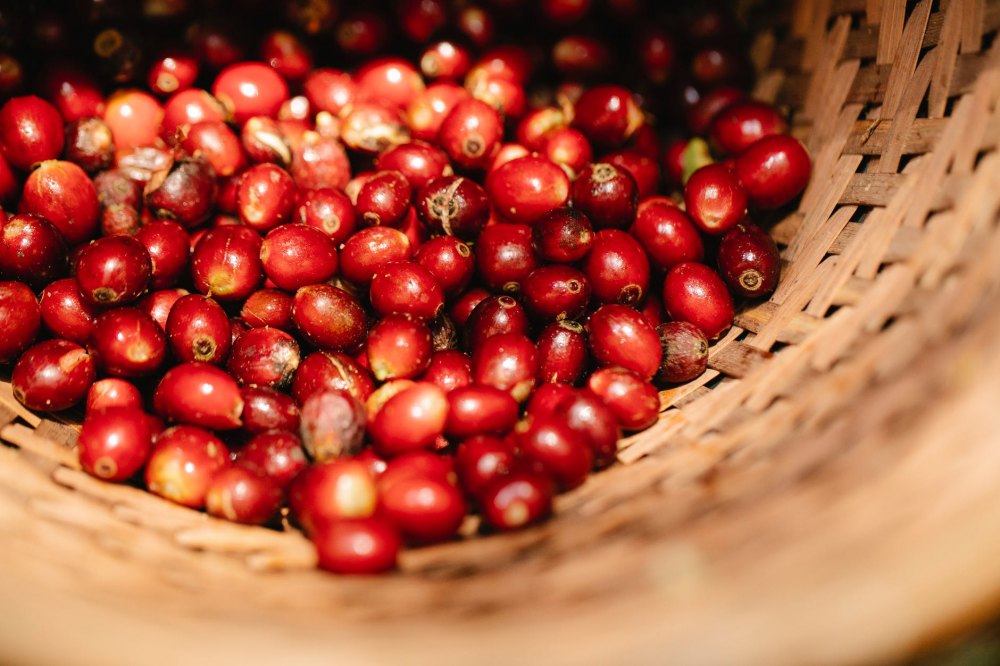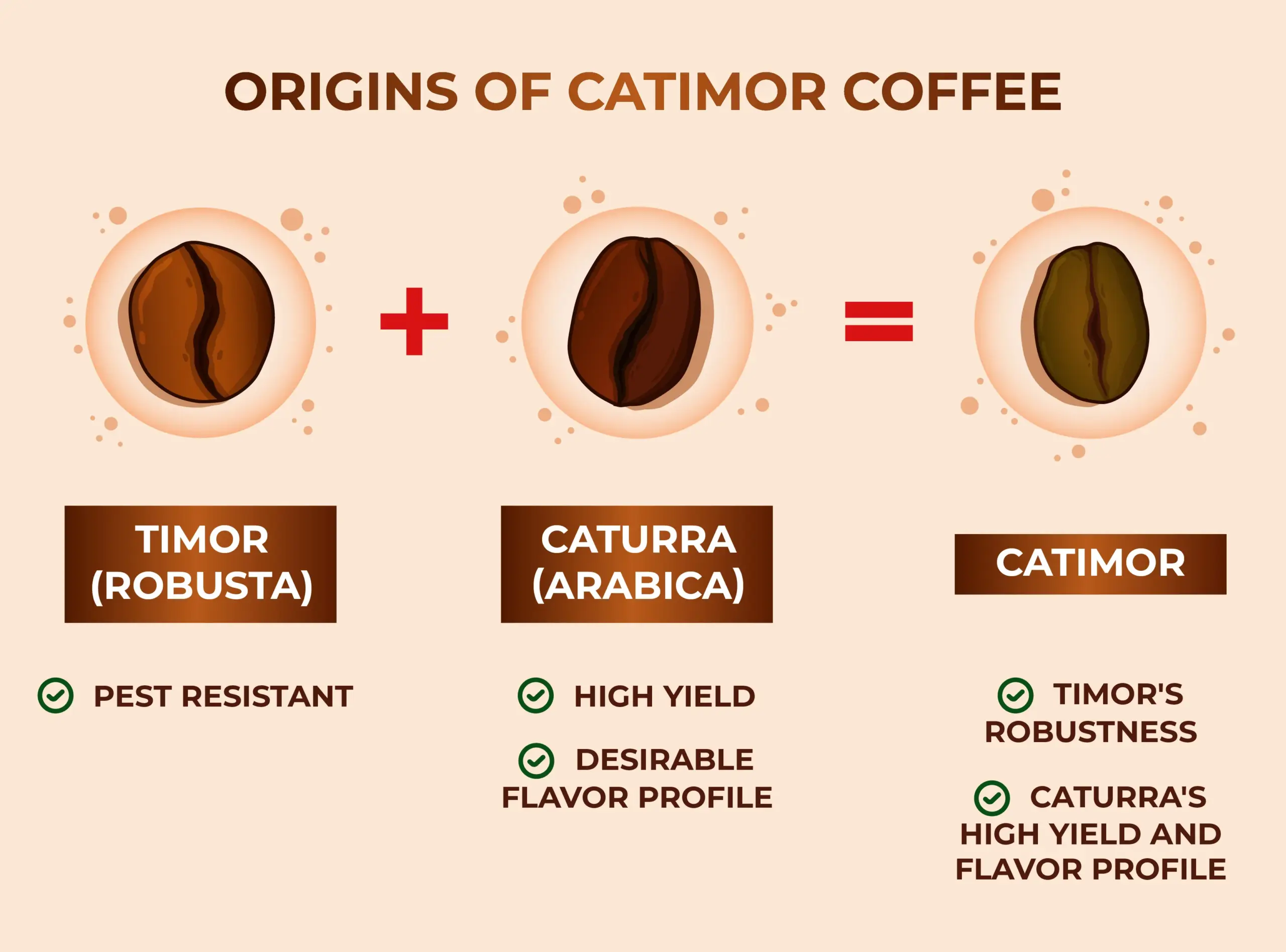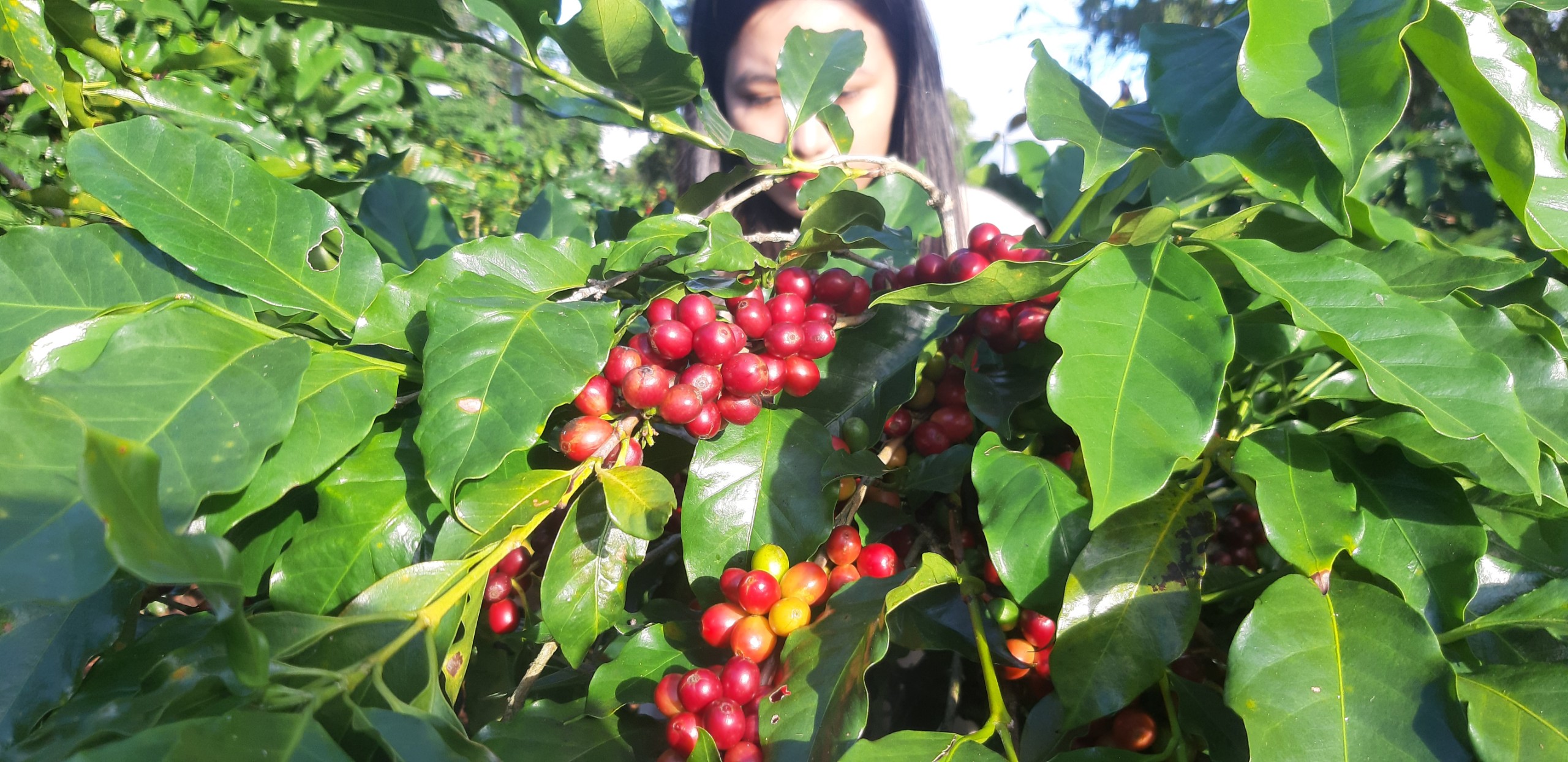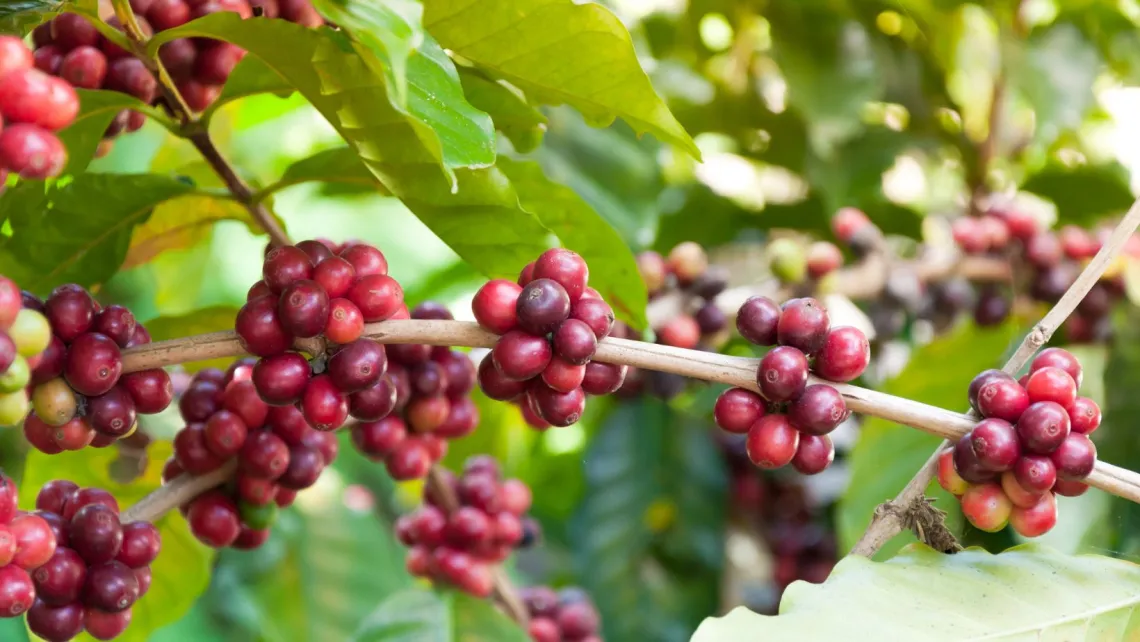If you are knowledgeable about coffee, you have probably heard of Catimor coffee. In this article, we will learn more about the definition, common classifications of Catimor, its characteristic flavor, as well as ways to enjoy and fully experience the allure of this special coffee variety.
What is Catimor coffee?
Catimor coffee originated in Portugal in 1959, as a hybrid between two varieties: Caturra (a variant of Arabica) and Timor (which itself is a hybrid between Arabica and Robusta). The initial goal of this hybridization was to create a coffee variety with good disease resistance, high productivity, and suitability for various cultivation conditions.

Due to its complex hybrid origin, Catimor coffee possesses an extremely special flavor, with a distinctive blend of light bitterness, refreshing acidity, sweet aftertaste, and characteristic aroma. At the same time, this coffee variety has good growth ability, delivering high productivity and outstanding economic value.

Catimor coffee is typically divided into 3 sub-varieties including:
- Catimor T-8667 is a short-stemmed coffee variety but produces very large beans.
- Catimor T-5269 is a variety that adapts well to areas with altitudes from 600 – 900m above sea level.
- Catimor T-5175 is a coffee variety with the highest productivity but requires moderate living conditions, unable to tolerate locations that are too high or too low.
Therefore, depending on each geographical area, growers can consider the most suitable variety.
Characteristics of the Catimor coffee plant
In terms of biological characteristics, the Catimor coffee plant belongs to the woody-stemmed plant group that is easy to grow, with a canopy of leaves that covers the stem, helping to limit damage from stem borers. The plant usually grows in a bush form, not tall, with an external appearance similar to tea plants. This variety is hybridized to have good pest and disease resistance, bringing high economic value. 1 hectare of coffee can achieve a yield of up to 4 – 5 tons under good cultivation conditions.
Read more: What is Culi coffee?
Catimor coffee beans are round, small, contain low caffeine content, only about 1 – 2%. When processed correctly, the aroma will be extremely intoxicating and alluring, especially with a gentle but refreshing acidity.

If you just glance at them, Catimor coffee beans look quite similar to Arabica Bourbon coffee, so it’s difficult to distinguish them with the naked eye. The best way to identify them is through Catimor’s aroma.
In reality, the Catimor variety, thanks to its good pest and disease resistance, has become one of the coffee varieties with high economic value in Vietnam. With 1 hectare of Catimor, you can achieve a yield of up to 4 – 5 tons per year if cultivated effectively. Thanks to these advantages in flavor, Catimor coffee prices are also one and a half times more expensive than Robusta coffee.
History and origin of Catimor coffee
Around the early 19th century, in Central America and South America, epidemics frequently occurred on coffee plant varieties, especially Moka, Typica, and Bourbon coffee varieties. At that time, scientists made great efforts in researching and creating new coffee varieties with good pest and disease resistance, small stems but capable of high productivity. It wasn’t until 1959 that Portuguese researchers successfully bred a new type of coffee plant called Catimor – a distinctive coffee variety that could meet all of the above criteria.

This tea coffee variety was planted experimentally to evaluate productivity, pest and disease resistance with small stem sizes. This allowed farmers to plant more trees in the same area, thereby multiplying production. Catimor coffee beans were then introduced in Brazil in 1970. At this time, Catimor also created a big sensation in the coffee production industry when coffee factory owners were all competing to “hunt” for this good coffee variety.
Flavor of Catimor coffee
Being a hybrid variety, Catimor has an extremely indescribable flavor. When enjoying it, you can easily feel each drop seeping deep into your throat, awakening all the senses in your body. Initially, there is a light bitter taste mixed with a bit of refreshing acidity, but the aftertaste afterward is sweet and very special. Catimor has a lower caffeine content than purebred Robusta, so the bitterness is also lighter.
The quality of flavor in coffee is also greatly affected by cultivation altitude, climate, soil, as well as planting and care methods. This variety has an ideal altitude for planting of about 700 to below 1650 meters above sea level. At lower altitudes, the sensory flavor of Catimor is similar to Arabica Bourbon. Conversely, if grown at higher altitudes, the beans will have a light bitterness, mixed with refreshing acidity and gentle sweetness like Caturra.

How to enjoy Catimor coffee
Regarding how to enjoy Catimor, people can try 2 common methods: either brewing pure original Catimor or blending it with another coffee variety to create a new flavor.
If you choose to brew pure Catimor coffee, you should research and consider buying coffee from a reliable address and then apply the machine brewing method.
But if you are a coffee enthusiast who likes to try new things, you can blend Catimor and Robusta to get a rich cup of coffee. The brewing ratio will be 3:1 or 4:1, Catimor first and Robusta second respectively. At this point, the coffee will have a more bitter and intense taste.
Catimor coffee growing regions in Vietnam
Currently, in Vietnam, the Catimor coffee variety is being grown quite commonly in most areas such as Dak Nong, Lam Dong, Dak Lak, Quang Tri, Nghe An, and Son La.
Altitude usually directly affects the shape, size, and flavor of coffee. For the Arabica variety, the appropriate altitude for planting is in the range of 900-1920m above sea level. For Catimor, according to research results, they usually develop most optimally if planted at altitudes from 700-1000m. One special thing Hello 5 Coffee wants to share with you is that in Quang Tri, Khe Sanh coffee of the Catimor variety is grown at an altitude of 650m, even some areas have altitudes of only 520m, but in 2021, Quang Tri arabica catimor coffee rose to become the Vietnamese specialty coffee champion.

Is Catimor arabica or robusta?
Catimor is classified as Coffea arabica species, but in reality, it is the result of a complex hybridization process between 2 arabica and robusta varieties. Specifically, Catimor is a hybrid of Timor Hybrid (HdT) and the Caturra variety. Among them, Timor Hybrid is a natural hybrid between Typica (an arabica variety) and robusta, so it simultaneously possesses the genetic characteristics of both species.
Therefore, you cannot simply say Catimor is arabica while ignoring the important factors of complex hybrid origin with robusta, the diversity within the variety group, as well as the outstanding characteristics that Catimor inherits from robusta.
Notes when using Catimor coffee
- Caffeine content: Catimor coffee has a caffeine content of 1-2%, therefore people with a history of heart disease, frequent insomnia, or sensitivity to caffeine should consider the amount of use to avoid adverse effects on health.
- Time to drink: You should drink Catimor coffee in the morning to avoid insomnia at night.
- Coffee powder storage: To preserve the full flavor, store Catimor coffee in a sealed bag. Do not store Catimor coffee powder in the refrigerator as it can make the coffee damp, affecting quality and flavor.
The above article has compiled information answering the question of what Catimor coffee is, its hybrid origin, biological characteristics, and distinctive flavor. If you are looking for delicious, quality coffee beans, roasted to perfection, come to Hello 5 Coffee, we are a manufacturer, supplier, and exporter of high-quality Vietnamese coffee with more than 12 years of experience. Contact us immediately via WhatsApp (+84) 81 535 5505 or Email info@hello5coffee.com for the fastest and most accurate support!
